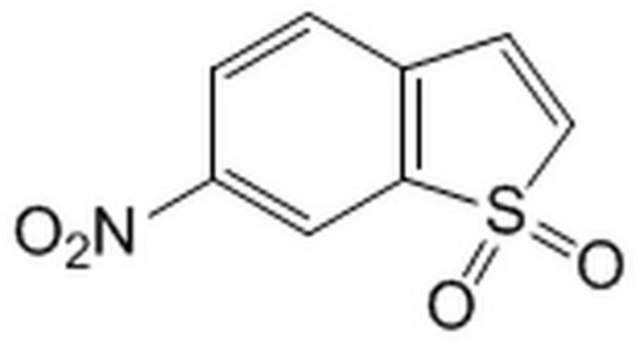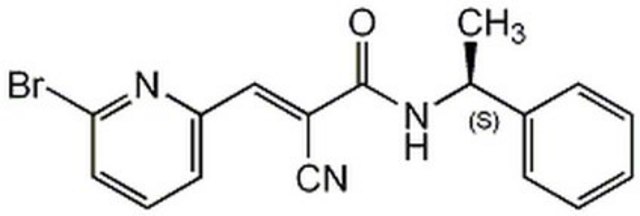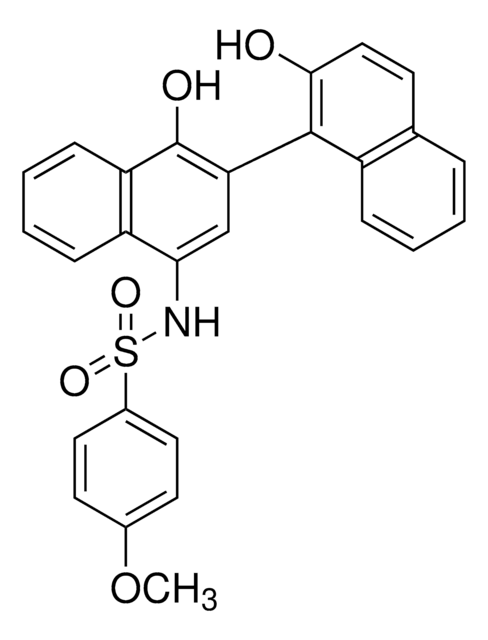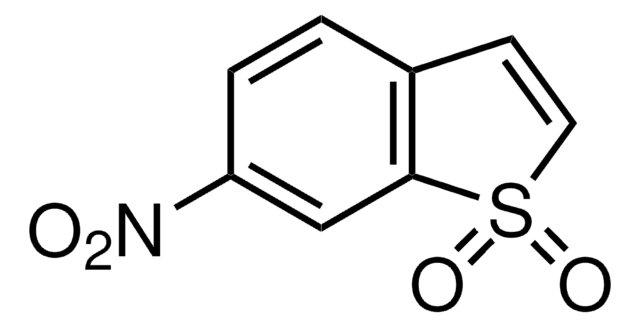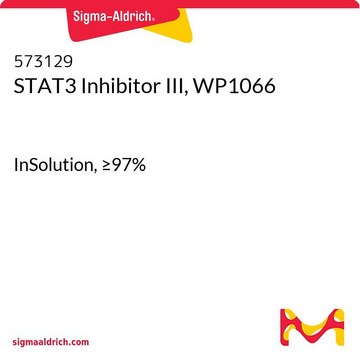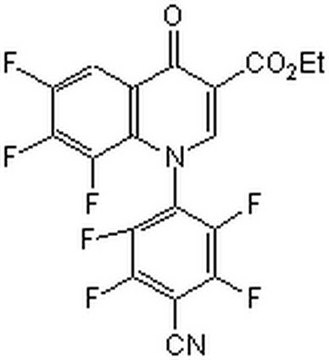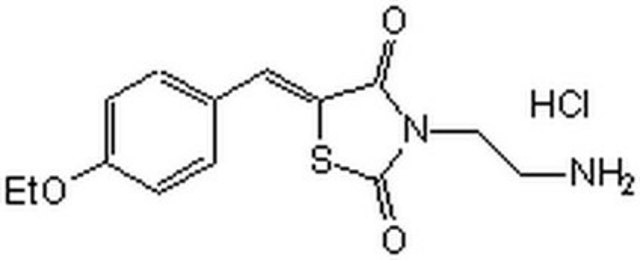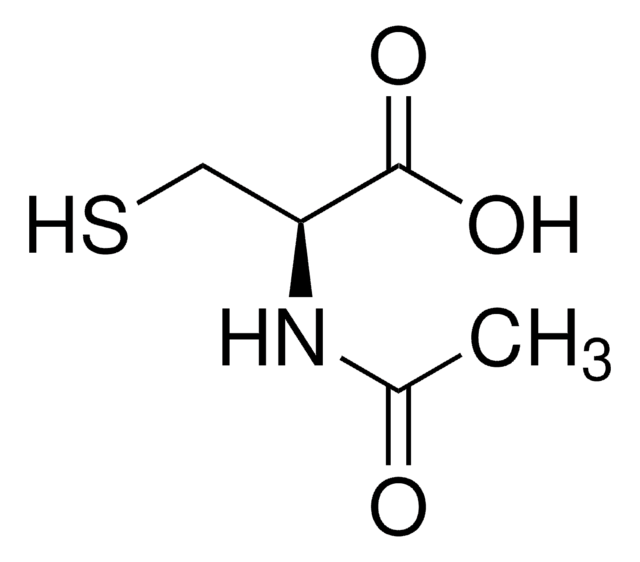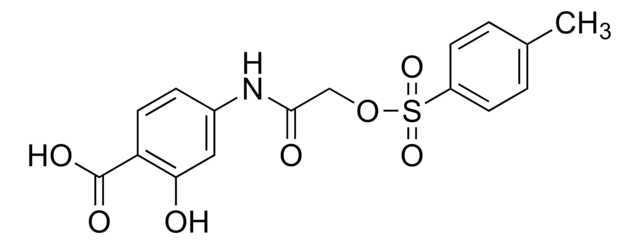573126
STAT3 Inhibitor XI, STX-0119
The STAT3 Inhibitor XI, STX-0119 controls the biological activity of STAT3. This small molecule/inhibitor is primarily used for Phosphorylation & Dephosphorylation applications.
别名:
STAT3 Inhibitor XI, STX-0119, N-(5-(Furan-2-yl)-1,3,4-oxadiazol-2-yl)-2-phenylquinoline-4-carboxamide
登录查看公司和协议定价
所有图片(2)
About This Item
推荐产品
质量水平
方案
≥90% (HPLC)
表单
solid
制造商/商品名称
Calbiochem®
储存条件
OK to freeze
protect from light
颜色
gray to off-white
溶解性
DMSO: soluble
运输
ambient
储存温度
2-8°C
SMILES字符串
O=C(NC1=NN=C(C2=CC=CO2)O1)C3=CC(C4=CC=CC=C4)=NC5=C3C=CC=C5
InChI key
MNPXTRXFUMGQLK-UHFFFAOYSA-N
一般描述
A cell-permeable oxadiazolyl-quinolinecarboxamide that is shown to selectively suppress STAT3, but not STAT1, STAT5a, or STAT5b, DNA binding activity and prevent IL-6-stimulated STAT3 dimerization in HEK293 cells (by 99% at 100 µM), as well as inhibit the expression of STAT3 target genes both in cultures in vitro (effective conc. 50 µM) and in SCC3-derived tumors in mice in vivo (160 mg/kg/day; p.o.).
A cell-permeable oxadiazolyl-quinolinecarboxamide that is shown to selectively suppress STAT3, but not STAT1, STAT5a, or STAT5b, DNA binding activity in nuclear extract from IL-6-stimulated MDA-MB-468 cells (by 74% at 50 µM) and prevent IL-6-stimulated STAT3 dimerization in HEK293 cells (by 50% and 99%, respectively, at 74 and 100 µM), as well as inhibit the expression of STAT3 target genes, c-myc, cyclin D1, and survivin, both in cultures in vitro (effective conc. 50 µM) and in SCC3-derived tumors in mice in vivo (160 mg/kg/day; p.o.).
包装
Packaged under inert gas
警告
Toxicity: Standard Handling (A)
其他说明
Ashizawa, T., et al. 2011. Int. J. Oncol.38, 1245,
Matsuno, K., et al. 2010. ACS Med. Chem. Lett.1, 371.
Matsuno, K., et al. 2010. ACS Med. Chem. Lett.1, 371.
法律信息
CALBIOCHEM is a registered trademark of Merck KGaA, Darmstadt, Germany
储存分类代码
11 - Combustible Solids
WGK
WGK 2
闪点(°F)
Not applicable
闪点(°C)
Not applicable
Guoming Hu et al.
Cancer immunology research, 8(10), 1273-1286 (2020-08-28)
The tumor microenvironment induces immunosuppression via recruiting and expanding suppressive immune cells such as regulatory T cells (Treg) to promote cancer progression. In this study, we documented that tumor-infiltrating CD73+ γδTregs were the predominant Tregs in human breast cancer and
我们的科学家团队拥有各种研究领域经验,包括生命科学、材料科学、化学合成、色谱、分析及许多其他领域.
联系技术服务部门